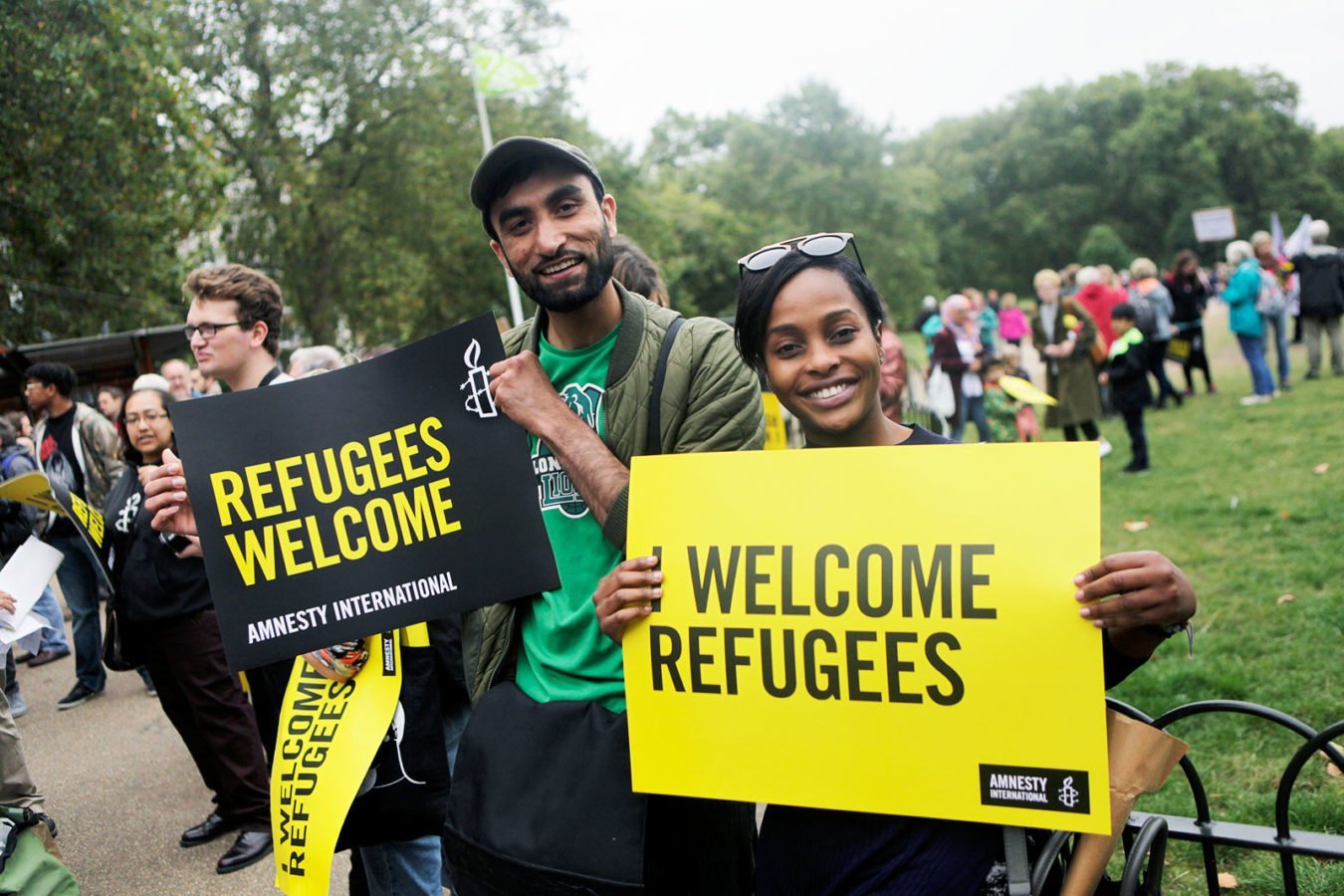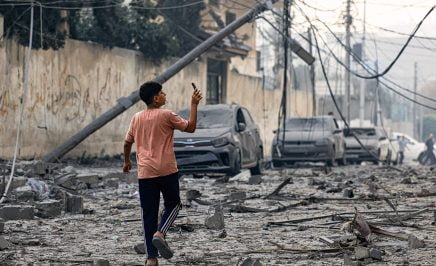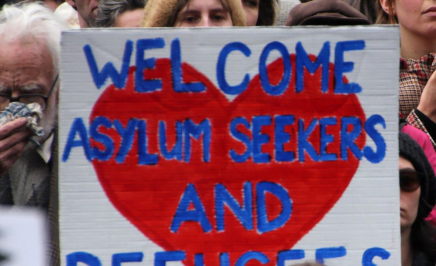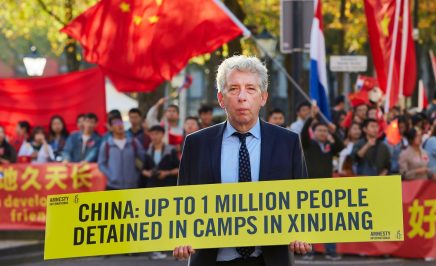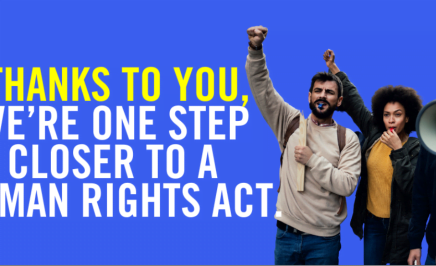The purpose of this resource is to empower you with the tools and knowledge needed to navigate information, conversations and the complexities of refugee rights campaigning in Australia.
Australia played an important role in resettling vulnerable refugees through the Refugee and Humanitarian Program, but we can be doing so much more. Due to the impacts of COVID-19, only 5,947 visas were issued out of an already historically low intake in 2020. Through campaigning efforts in 2023 the government announced an increase in the program to 20,000.
While this is an important step, the numbers are in stark contrast to countries like the United States, which has committed to increasing their humanitarian intake to 125,000 places annually. Canada has a goal to resettle 50,000. We can be doing much more.
Raising Australia’s humanitarian intake will take lots of everyday Australians having meaningful conversations with their friends, family, neighbours, colleagues and even strangers. With these conversations, we can break down common myths about refugees, and change the hearts and minds of Australians, forcing the government to raise the humanitarian intake.
The Following steps are designed to help you have effective conversations, combat any misinformation and disinformation, and change the hearts and minds of those in your community.
What we will cover?
 Understanding the issue
Understanding the issue How to fact check information when consuming content
How to fact check information when consuming content  Challenging Myths about Refugee Rights
Challenging Myths about Refugee Rights Putting Knowledge into Action
Putting Knowledge into Action Changing hearts and minds
Changing hearts and minds
 UNDERSTANDING THE ISSUE
UNDERSTANDING THE ISSUE
What’s happening?
Minority groups, protestors, opposition politicians and women are being killed, arrested and tortured by brutal regimes in countries such Afghanistan, Myanmar and Iran. Civilians are suffering from conflict escalations in Sudan, Ukraine and Gaza. Women’s and girls’ rights are being violated. LGBTQIA+ communities are at risk. In our region people who have fled persecution are languishing in refugee camps and impermanent, poor living conditions in Bangladesh, the Thai-Myanmar border region and Indonesia.
What is Amnesty calling for?
Before the 2022 federal election, the Albanese Government made commitments to protect refugee rights. This included increasing the humanitarian program to 27,000 and to make private/community refugee sponsorship schemes additional to this number. While the government has started to increase the program it’s still short of the number promised and it has yet to make community sponsorship additional.
Why do people leave their countries?
There are many reasons why it might be too difficult or dangerous for people to stay in their own countries. For many children, women and men, they’re forced to flee from violence, war, hunger and extreme poverty, because of their sexual or gender orientation, or from the consequences of climate change or other natural disasters. Often people will face a combination of these difficult circumstances.
Who is an Asylum seeker?
An asylum seeker is an individual who is seeking international protection. In countries with individualised procedures, an asylum seeker is someone whose claim has not yet been finally decided on by the country in which he or she has submitted it. Not every asylum seeker will ultimately be recognised as a refugee, but every refugee is initially an asylum seeker.
Who is a Refugee?
A refugee is a person who has fled their country of origin and is unable or unwilling to return because of a well-founded fear of being persecuted because of their race, religion, nationality, membership of a particular social group or political opinion.
Other resources
- Our Toolkit
- Our guide on structured conversations
- ASRC’s Words that work
- What was the “Tampa affair” and why does it matter? – Amnesty International Australia
Misinformation vs Disinformation

When distinguishing between misinformation and disinformation, it’s important to consider the intent behind the information source. Misinformation refers to false information that doesn’t necessarily intend to mislead, whereas disinformation refers to false information deliberately created to deceive.
To determine whether a particular post or article is disinformation or misinformation, you should thoroughly investigate the source. Especially in the context of conflicts, it is crucial to identify whether the information you’re consuming is misinformation or disinformation. And it’s exactly what this resource is gonna help you do.
When you are approaching any sort of information, especially online, it is important to ask yourself questions concerning both the truthfulness and the intention of the message.
What do misinformation and disinformation look like?
Disinformation and misinformation can come in many forms, and be spread by the media, on social media, and in conversations with your family and friends. These can include:
- False Narratives: Misinformation entails sharing inaccurate or incorrect information. Disinformation is sharing false contextual information: meaning the content shared is genuine but it is reframed in a misleading way to support a certain viewpoint.
- Manipulated and/or Misleading content designed to evoke emotion: Misinformation often strives to evoke certain emotions, like anger or frustration, rather than simply imparting information. Pay close attention to the language used and consider how it influences your emotional response.
- Outdated Information: Misinformation often involves sharing information that was once accurate but is no longer contextually relevant.. Further, always ensure that video and images that you consume on social media are correctly dated (and represent the specific location in discussion)
- Satire or Parody: On social media platforms, memes, satirical, and parody content can be taken out of context. It’s essential to engage in relevant fact-checking processes when encountering satire or parody even if it appears genuine or informative.
 How to Fact Check Information when Consuming Content
How to Fact Check Information when Consuming Content
Tips to fact check when reading content on social media or through the media
- Consider potential biases: When assessing a source, be mindful of any biases that could be influencing its content. Review previous posts and articles to get a comprehensive picture on the source.
- Appeal to sensationalism: Ask yourself when watching videos on social media whether the content describes specific events or facts or whether it is meant to prompt an emotional trigger for the audience. You have to harness critical thinking skills, and question information that may come across or overly sensational.
- Evaluate the source: Investigate the credibility of sources, and be cautious of sources with clear bias or a history of spreading false information.
- Be mindful of potential propaganda: Remember to critically assess any political affiliations sources may have as this may be reflected in the information they present.
- Examine the timing: Check that the information you’re reading is contextually relevant by checking its publication date.
- Avoid echo chambers: Don’t limit your exposure to information that aligns solely with your pre-existing views and challenge your own assumptions when diversifying the information and sources you engage with.
- Diversify your news sources: Rely on multiple sources to form an opinion rather than just one, and check whether something is being shared widely, and by verified sources. Fact-check claims by cross-referencing with multiple sources.
- Be careful of faulty logic: Some social media posts may contain logical fallacies or are built on premises that offer no proof. Do not jump to conclusions on facts or jump before clarifying the reasoning behind it.
- Report misinformation and disinformation: If you come across any misinformation or disinformation, report it to the platform or to fact-checking organisations, such as the RMIT ABC Fact Check site.
- Don’t share sources that contain disinformation: When you comment on or share these posts on social media, it can signal to the algorithm to prioritise them and more people will end up seeing them!
The Importance of Language
Language plays a critical role in shaping public perception. Dehumanising language is a tool often used to demean or delegitimise individuals or groups. Describing people as “animals,” beasts”, or “monsters” is a tool that has historically been used to erode empathy and excuse unthinkable acts. This is one of the most harmful and dangerous forms of propaganda, and it should always be called out. We must be on the lookout for terms that strip people of their humanity or perpetuate harmful stereotypes. When sharing content on social media or having conversations in person, here are some words you can use to help change the hearts and minds of the people you are talking to.
You can read our full terminology guide here!
| Try saying | Instead of |
| ✅ People seeking asylum | ❌ Asylum Seeker(s) |
| ✅ Refugee process, refugee pathways, refugee system | ❌ Humanitarian Intake Program |
| ✅ Welcome refugees, build a fair/efficient/welcoming system | ❌ Raise the intake, resettle more refugees |
| ✅ We should/must/can, as caring people | ❌ Australia(ns) should/must/can, as Australians |
| ✅ Create a fair and efficient process/system, fairly examine each (person’s) case | ❌ Fix our broken system, tackle the problem |
| ✅ Treat others the way we want to be treated, do the right thing, treat people fairly and with respect | ❌ Comply with international law, humanitarian and legal obligations, international standards |
| ✅ Live in peace, live free from danger, safety, | ❌ Security, survival, escape |
| ✅ Integrate into our communities, Safely rebuild their lives as part of our communities | ❌ Be settled in Australia, be placed onshore, resettle |
| ✅ Seeking safety, rebuilding their lives where it’s safe, looking to set up a safe home | ❌ Fleeing persecution, violence and torture |
| ✅ It is legal to seek asylum, it is an issue of basic rights, foundation of human dignity | ❌ It’s is not illegal to seek asylum, not a security issue, not a threat, no need to fear, myth busting |
✅ Flourish, prosper, thrive | ❌ Survive, better life |
| ✅ Government choosing to lock out those in need, government refusing to welcome, [Name] decided to deny safety to | ❌ Injustices being perpetrated, harm being inflicted, conditions worsened |
| ✅ Put in harm’s way by [Name], denied basic rights by [Name] | ❌ Graphic descriptions of torture, murder, sexual abuse |
 Challenging Myths about refugees
Challenging Myths about refugees
Over the past decade, governments and the media worldwide have maintained an alarming anti-refugee narrative, nourished by misconceptions and scare tactics. This narrative often portrays refugees as threats to national security, drains on resources, and even as potential terrorists. Such rhetoric not only promotes discrimination and xenophobia but also makes people forget about the struggle of millions fleeing conflict, persecution, and poverty. The impact of this narrative is deep, as it directly affects refugees trying to rebuild their lives in safety. By perpetuating myths and stereotypes, governments and the media create barriers for refugee integration, undermine social tensions, and ultimately interfere with global efforts to provide sanctuary and support to those in need. It is crucial to debunk these myths and challenge this harmful narrative to ensure that refugees can access the safety and opportunities they deserve.
 Putting Knowledge into Action
Putting Knowledge into Action
As an activist, having conversations in your community is one of the most powerful things you can do to raise the humanitarian intake and support refugee rights in Australia.
Before you get started, it may be helpful to brush up your persuasive skills with our resource on how to have structured conversations on campaigns. Then follow these steps to start changing the hearts and minds of your community.
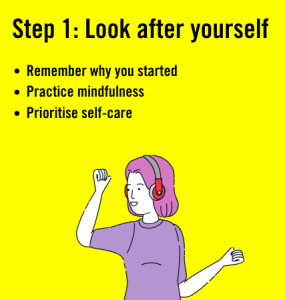
- Tune into you
- Remember what is your motivation behind initiating this conversation? How will it benefit you and the other person? What questions will it answer? What misconceptions will it overcome
- Take a few deep breaths and observe your emotions. Is this the right time for you to bring up this conversation?
- Know that some of these conversations are challenging, and you can always take a step back if you need to. Your wellbeing is important and activism needs to be sustainable.
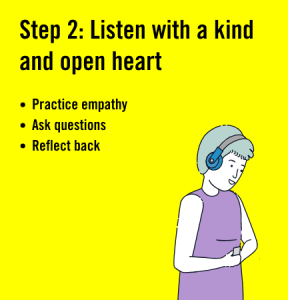
- Listening is as important as talking
- Practice empathy by trying to understand the perspective of the other person when they’re speaking,
- Ask questions that go beneath the surface of what someone is saying. What are the feelings and pre-conceptions behind their opinion?
- Demonstrate that you are paying attention by validating their emotions and reflecting their points back.
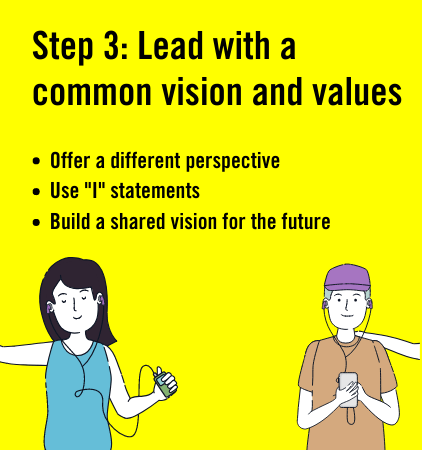
- Converse with the aim of creating union and not division
- Starting from shared values of protection of human rights and civilians, offer an alternative perspective on the current situation, based on credible information,
- Try and start your statement with “I” (I feel, I wonder) to keep the conversation open and respectful
- Highlight the kind of scenario that would be possible, something that you can both agree on because of your shared values. The end goal here is not necessarily to convince people you are right, but to achieve a greater understanding of where the other party has formulated their views from, whilst opening their mind to your ideas too.
With these steps in mind, you are ready to approach conversations with family and friends on this issue!
Safeguarding your Wellbeing
As activists, we can face resistance against our campaigns, our viewpoints, or simply a broader resistance to change. This resistance can affect our work and well-being. Burnout and vicarious trauma can happen and it’s important to keep a look out for the signs in yourself and your friends. You can check out our Sustainable Activism & Self Care guide as a starting point to ensure that you are looking after yourself. Trying to convince people of your point of view can be disheartening and frustrating, but is essential for social transformation. However, harassment and/or abuse is NOT resistance and is unacceptable. This falls outside of constructive dialogue and should not be tolerated.
